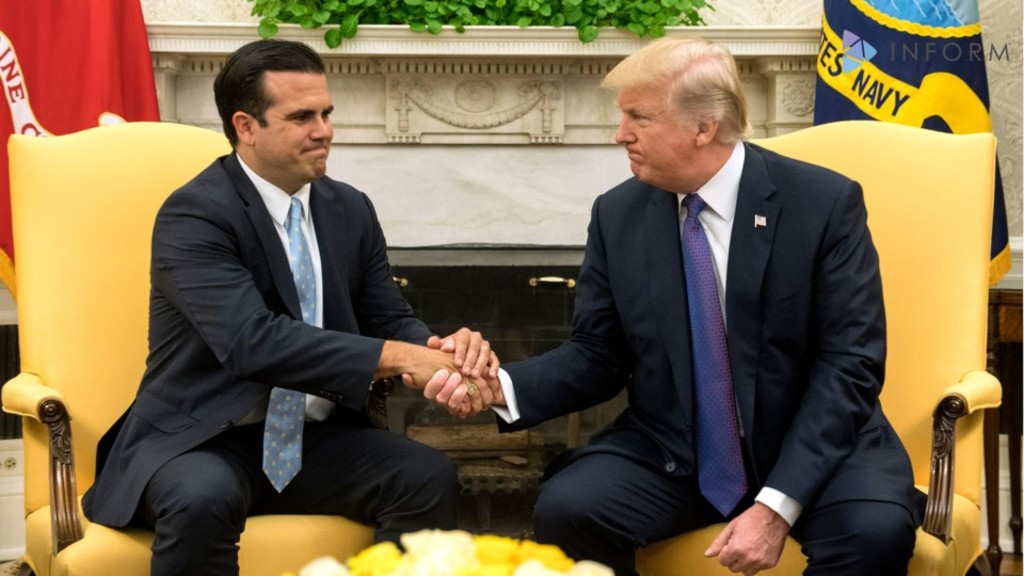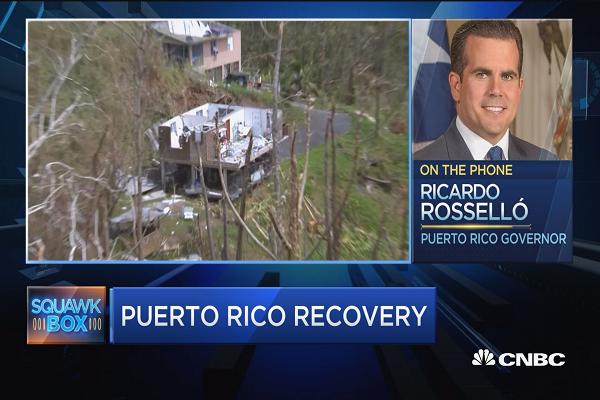SAN JUAN — Gov. Ricardo Rossello’s hope to have power restored to 95 percent of the island before Christmas is unrealistic given the damage caused by Hurricane Maria, according to the commander of the U.S. Army Corps of Engineers.
Lt. Gen. Todd Semonite said having half the island back online by January or February might be achievable, but to expect anything more fails to take into account the decrepit state of the system before the hurricane hit.
“There’s a lot of the grid that wasn’t built to code,” Semonite said at a Pentagon briefing Friday. “I’m not suggesting, I’m telling you, the old system was terrible. If there’s anything we could do to do this faster, we’d be doing it.”
Earlier this month, Rossello said the plan was to have half the island back on the grid by the end of November and to have power restored for 95 percent of Puerto Rico’s 3.4 million U.S. citizen residents by mid-December.
He acknowledged that “these are aggressive goals,” but Semonite said long-term total power restoration could take nearly a year as the Corps works in concert with the Puerto Rico Electric Power Authority (PREPA).
As of last Friday, about 21.6 percent of the island had power, Semonite said.
In the interim, the Corps is working to install 400 to 500 generators for temporary power with priority for hospitals, government buildings and schools, he said.
“The governor has made a milestone of trying to get 30 percent of the Puerto Rican load up by the end of October, and then 50 percent by the end of November,” Semonite said.
“I personally think those are stretch goals, but we’re very, very committed to trying to meet where the governor’s at, and all of our guys are going all out with every single thing we can to meet the governor’s goals,” he said.
“The challenge is going to be, how do you get past 50 percent? And I personally think that it’s going to go into January and February to get the majority of them back up and running,” Semonite added.
“This is going to be a massive, long-term rebuild — of rebuilding the grid in Puerto Rico,” he said. “So what we are doing is to go all out and put as many generators in as we can, mainly in public facilities.
“These are not a generator like you would buy at a great big, you know, convenience store downtown. This is a generator that’s pulled behind an 18-wheeler. Some of these are 30 and 40 feet long,” he added.
Semonite also gave a glimpse of the mounting costs of the relief and recovery. Since the hurricane hit Sept. 16, the Corps of Engineers has spent or committed a total of about $1.1 billion in funding through the Federal Emergency Management Agency — $922 million for Puerto Rico and $172 million for the U.S. Virgin Islands.
The $922 million for Puerto Rico includes a $240 million contract let by the Corps of Engineers last Monday to Fluor Corp. for work on power restoration, Semonite said. He said the eventual cost of the Fluor contract could run up to $1.3 billion.
In a release, Tom D’Agostino, president of Fluor’s Government Group, said “Fluor is proud to play an initial role in restoring a sense of normalcy to the people of Puerto Rico.”
Semonite stressed that the cost figures he gave were for the Corps of Engineers alone, and did not include other spending by the military and the federal government.
Puerto Rico was $70 billion in debt to bondholders before Hurricane Maria, and some estimates on recovery costs range up to $95 billion.
One of Fluor’s tasks will be to provide the work crews to put in poles to carry the transmission lines that were downed in the storm, Semonite said.
“Most of the big power plants are down in the south” of the island, he said, “and so there’s an awful lot of generation capability down in the south. Most of the load is up in the north.”
“And this is where the real challenge is. We need 62,000 poles to be able to get this up and running,” Semonite said. “And we haven’t done 100 percent assessment on all of this, but based on what we assessed right now with several different flights over this network and talking to our teammates in PREPA, that was 62,000 poles.”
In addition, “We’re probably going to need about 6,500 miles of wire. Just imagine 6,500 miles of electrical wire. You say, ‘Why can’t this be done faster?’ The average trained crew on a flat football field can probably put two poles in a day.”
As of last Thursday, U.S. Northern Command, which has been coordinating the military response and relief effort, said that more than 8,000 active-duty service members were deployed to Puerto Rico, compared to 2,700 active-duty service members in total in response to Hurricanes Harvey and Irma, which struck Texas and Florida.
The total number of service members involved, including National Guard and reservists, is more than 13,000, NorthCom said.





